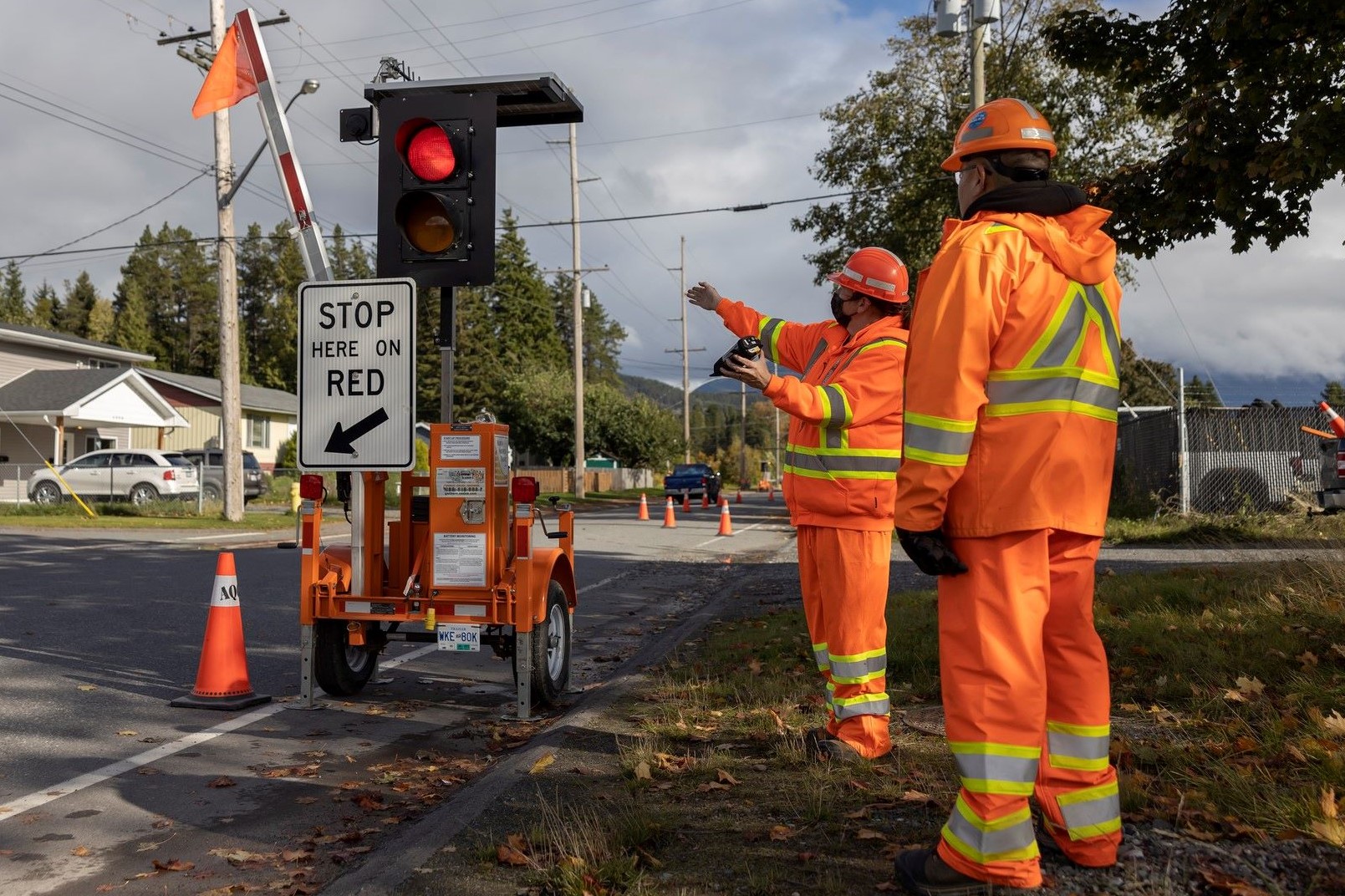Find out how new technology and updated training and supervision requirements are helping improve safety for traffic control workers.

Flagger training in Terrace, B.C.
Photo credit: WorkSafeBC, used with permission
“Being able to take workers off the road and away from traffic helps negate the very real danger that is present every minute of each shift,” says Fred Bradshaw, Saskatchewan’s Highways Minister, in a Journal of Commerce article that I recently read.
The article reports that an 18-year-old worker died on her second day at work controlling traffic in Saskatchewan. Since then, the province began to pilot automated flagger assistance devices (AFADs) that can be mounted on the back of a truck. This version of AFAD is also used in B.C.
Generally, AFADs are placed directly on the road or on trailers. But this newer adaptation can be plugged into a two-inch receiver on the back of a pickup truck. The device weighs 90 pounds, takes minutes to set up, and is meant for smaller maintenance crews who may not be equipped to use the heavier, large AFADs.
New traffic control requirements
AFADs are one of the control measures employers can use to minimize workers’ exposure to traffic.
Reducing workers’ exposure to traffic risk is part of OHS Regulation changes that took effect on December 1, 2021. The revised requirements include three key components: risk assessment, applying control measures, and ensuring adequate supervision.
“With effective controls and supervision in place, employers and workers can eliminate or significantly lower the risk of serious injury in this sector,” says Morris Benetton, WorkSafeBC Prevention Field Services manager.
Morris says that WorkSafeBC will engage with employers to support solutions that align with the updated Regulation, with a focus on reducing serious injuries resulting from being struck by a vehicle.
To put that into perspective, in 2020, 23 roadside workers were injured and missed work after being hit by vehicles. From 2011 to 2020, 12 were killed and 207 were seriously injured. (Read more in Street smarts: Raising efforts to reduce the risk for traffic control workers from the Sept/Oct 2021 issue of Worksafe Magazine.)
Updated training for traffic control workers
The updated Regulation includes new and revised training requirements for all workers involved in controlling traffic. This includes requirements for traffic control persons, traffic assistants, and workers who control traffic at emergency scenes. For an overview of the Regulation changes, see Regulatory amendment: A primer on traffic control.
We should all remember to slow down and pay attention when driving in work zones, to help keep workers on the roadside safe.


